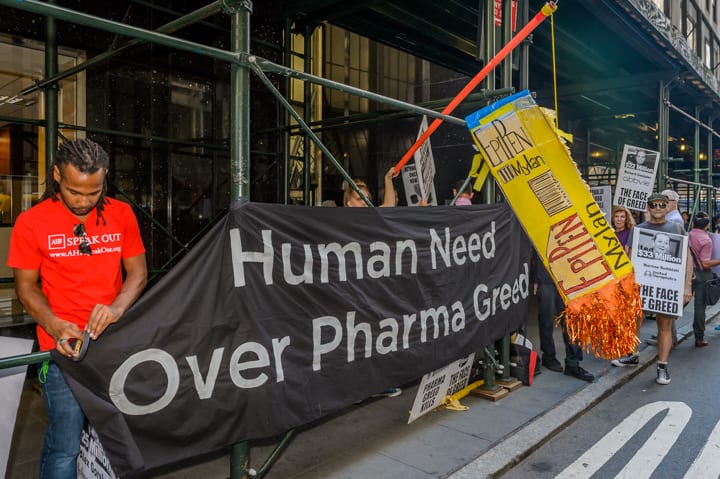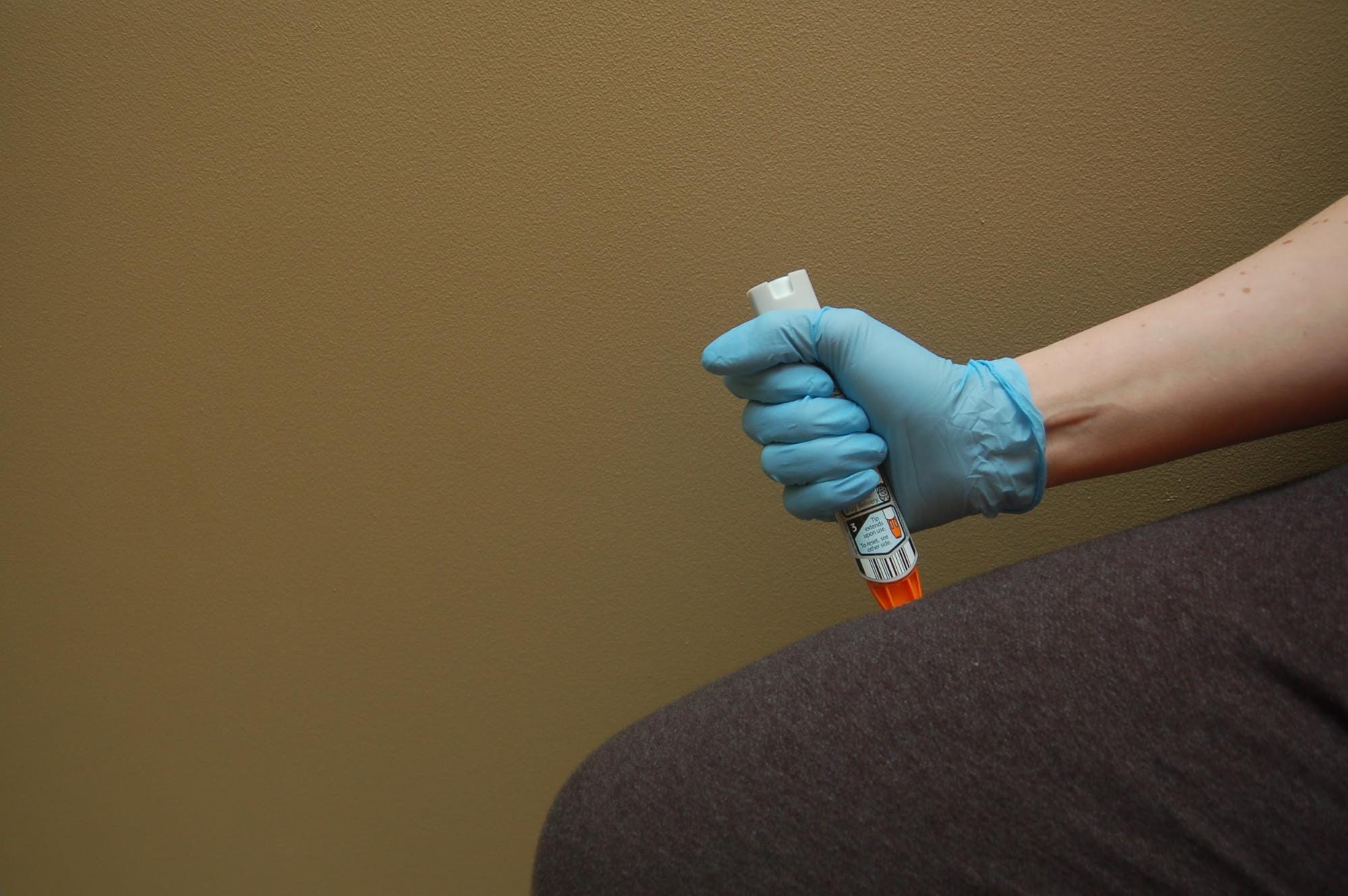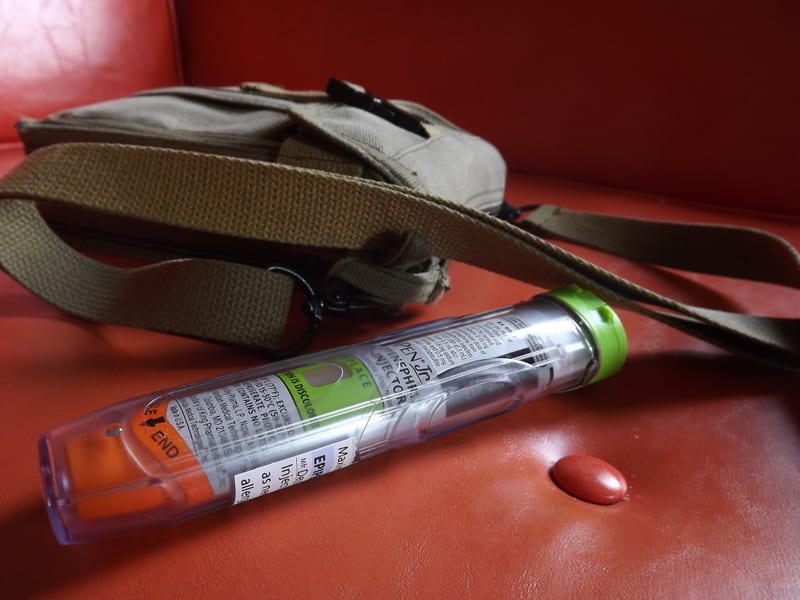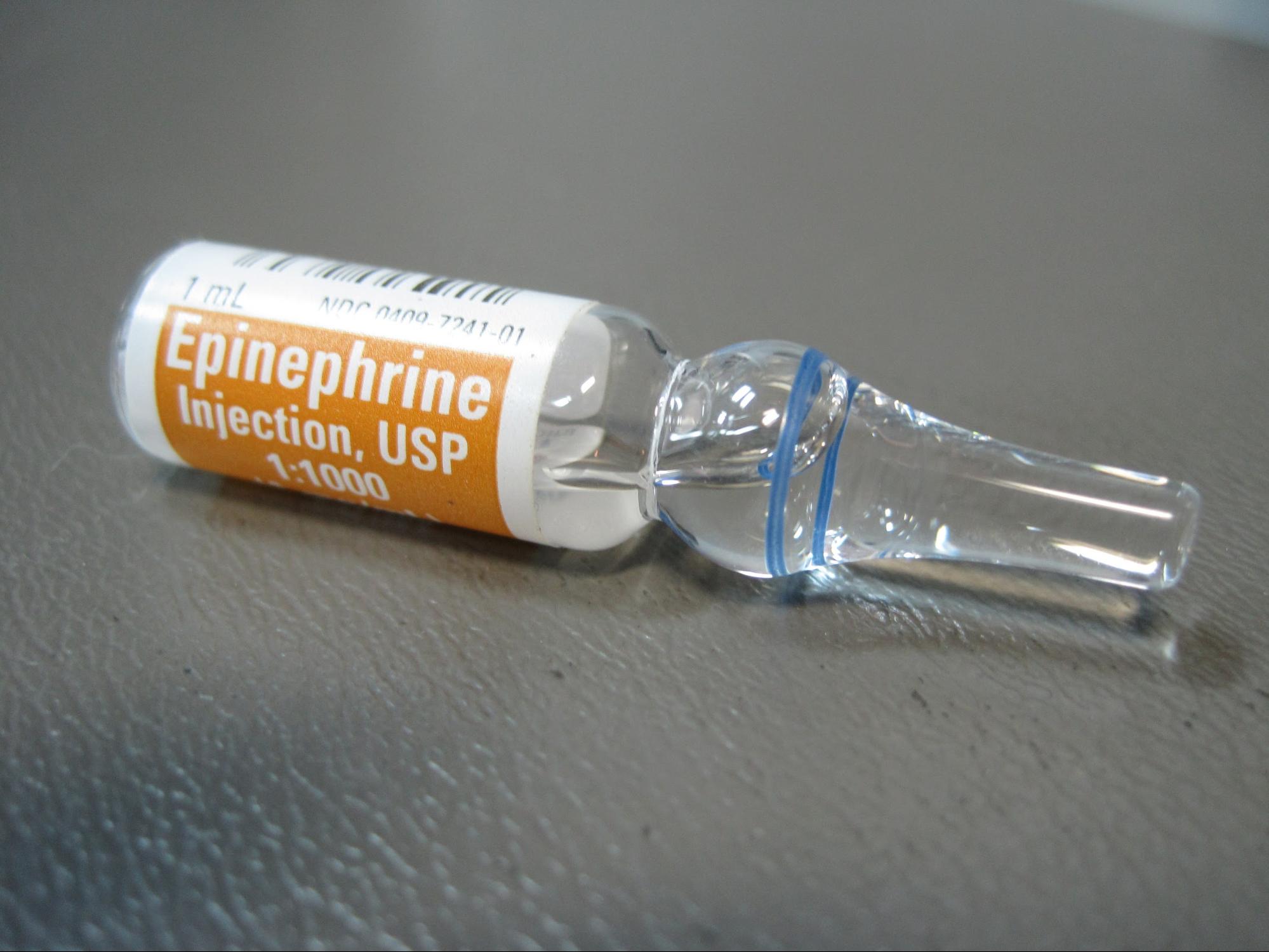
It was a typical Christmas for mom Colleen and her family. Everybody was sitting around the living room and enjoying the day. All of a sudden, Colleen's young son Ciaran started to wheeze. Knowing that Ciaran had a severe nut allergy, Colleen scooped him up and hurried to the kitchen. She grabbed an EpiPen and injected Ciaran's thigh straight through his pants. Within seconds, Ciaran's symptoms started to subside, and he was able to breathe again. The family rushed Ciaran to the hospital, and he made a full recovery. Even with all his family's precautions, Ciaran must have eaten something with nuts. In the crucial minutes that followed, the EpiPen saved his life and allowed Ciaran enough time to get to the hospital.

What's an EpiPen?
“EpiPen†is a brand name for a type of epinephrine injector used during allergic reactions. The injectors first emerged in the 1970s when they were used in the military. Since then, EpiPens have become a widespread medical supply, like first aid kits or emergency defibrillators. For people who suffer from severe allergies, EpiPens are not optional; they can be the difference between life and death during an attack.
Epinephrine is a hormone that the body produces naturally. It acts as a chemical messenger that can coordinate different parts of your body for “fight or flight†during intense activity, stress, or infection. You may also know its more common name, adrenaline. It's responsible for your pounding heart, quick breathing, and alertness when you do something dangerous or exhilarating.
Why does epinephrine help during an allergic reaction?

During an allergic reaction, the body's immune system mistakes a harmless substance (like peanuts or shellfish) for an invader (like bacteria). The immune system overreacts by setting off a chemical chain reaction. Mild allergies, such as seasonal allergies, result in symptoms like watery eyes and a stuffy nose. (See here for a more in-depth look at the physiology behind minor allergic reactions) During severe allergic reactions, however, the body goes through an extreme overreaction called anaphylaxis. Victims often suffer from hives, falling blood pressure, and a swollen tongue and/or throat .
Epinephrine counteracts this condition by opening airways, raising blood pressure, and redirecting blood to vital organs. An epinephrine injection can reverse the effects of the reaction and allow the victim time to get to the hospital for medical treatment.
Recent EpiPen Headlines
You may have heard of the recent heated controversy surrounding EpiPens. Over the past several years, the cost of EpiPens has skyrocketed. In 2009, a package of two cost about $100. The current price for the exact same set is over $600.
The astronomical price increase is due to a large pharmaceutical company known as Mylan. The company owns the patent for the design, and even the name “EpiPen†is a trademark (like Kleenex or Tylenol). The device has no generic brand, however, because Mylan holds the patent until 2025. As a result, Mylan has complete control over the price.

How much should it really cost?
Your body naturally produces epinephrine, but the epinephrine in injectors is synthesized in a lab. The process is not too complicated; scientists have been successfully making synthetic epinephrine since 1904. Shockingly, the epinephrine in each injection only costs about $1.00 per dose. So what accounts for the other hundreds of dollars?
Mylan's Monopoly
Mylan currently holds the patent on the drug-device combo used in EpiPens. This means that no other company can use the same method to deliver epinephrine. Unfortunately, the EpiPen design is the most efficient: one cap, one needle, and automatic delivery. Companies that want to make a generic product must do one of two things: 1) Come up with a different design or 2) Successfully sue Mylan to invalidate their exclusive rights to the design.
A few companies have successfully come up with a new design, but the new products couldn't survive the scrutiny of the market and the FDA. Twinject and Adrenaclick both manufactured new designs with cases and multiple caps, but the brands were discontinued in 2012. Health officials expressed concern that somebody accustomed to the streamlined EpiPen design might not be able to use the new technology under stress. Since then, Adrenaclick has resurfaced, but they have been unable to gain traction with insurance companies.
Several companies have won in court but failed to produce a working product. In February, the FDA rejected a device by Teva Pharmaceuticals, citing “certain major deficiencies.†The company's release has since been delayed until at least 2017. Prior to that, the FDA rejected a product from Adamis for further research. Because EpiPens already work well, it's incredibly difficult to convince the FDA that a new product is comparable.

Lawsuits and Hope for the Future
The sky-high prices and exclusive patents on EpiPen have created lots of enemies for Mylan. The company currently faces two class action lawsuits, protesting, and a recent delivery of over 700,000 petition signatures against the high prices. For now, though, Mylan holds the power. Until the patent expires or a company produces a comparable generic product, families are left to deal with the consequences of Mylan's price hikes.

For families like Ciaran's, access to EpiPens at any minute is crucial for health and safety. Like many families, they probably keep multiple pens stashed around the house and cars. Schools and workplaces also need multiple EpiPens throughout their buildings to ensure that the life-saving drug is always within reach. Yet, EpiPens cost up to $300 per injector. As individuals with severe allergies purchase this vital medication, they can face thousands of dollars in charges. How many people will be forced to buy fewer EpiPens than they need? “Backup†EpiPens may not always be in the budget. A minute could mean the difference between life and death when somebody is in anaphylactic shock. What happens when an EpiPen is just a little too far out of reach?
About the Author:
 |
Amanda Piehler is an undergraduate at UGA double-majoring in Biology and Science Education. When she's not adventuring in academia, you can find her dancing, running, cooking, SCUBA diving, or hiding out in a local theatre. Connect with her on Facebook or email her at apiehler@uga.edu! More from Amanda Piehler. |
About the Author
-
athenssciencecafehttps://athensscienceobserver.com/author/athenssciencecafe/April 17, 2020
-
athenssciencecafehttps://athensscienceobserver.com/author/athenssciencecafe/April 12, 2020
-
athenssciencecafehttps://athensscienceobserver.com/author/athenssciencecafe/April 3, 2020
-
athenssciencecafehttps://athensscienceobserver.com/author/athenssciencecafe/March 30, 2020







